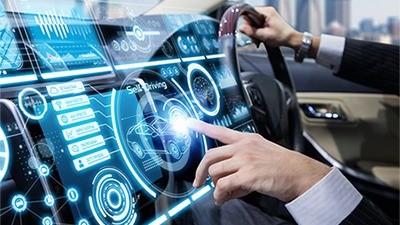"The Future of Driving: How In-Car Infotainment Systems Are Evolving – Insights from Infosphere"
In-car infotainment systems have undergone a remarkable transformation over the past few decades, evolving from simple radio and CD players to highly sophisticated multimedia hubs that offer entertainment, connectivity, and even safety features. As technology continues to advance, the future of infotainment is poised to redefine the driving experience entirely. In this article, we'll explore the evolution of in-car infotainment systems, how they’re changing the way we interact with our vehicles, and the latest trends shaping this space.
The Beginnings: AM Radios and Cassette Players
The history of in-car infotainment systems dates back to the mid-20th century, when the first car radios were introduced. These early radios, primarily AM models, provided a basic form of entertainment for drivers and passengers. However, the functionality was limited, as drivers only had access to a few radio stations. In the 1970s, cassette players were introduced, allowing drivers to play their own music and even record their favorite radio shows. The 1980s saw the introduction of CD players, which further enhanced the in-car music experience by offering higher sound quality and a more diverse selection of audio formats.
The Rise of Digital Displays and Touchscreens
The real turning point in the evolution of infotainment systems came in the late 1990s and early 2000s with the introduction of digital displays and touchscreens. These systems offered far more than just music. They incorporated GPS navigation, climate control, and hands-free calling, all integrated into a single, easy-to-use interface. The shift towards digital systems made the driving experience more intuitive, reducing the need for physical buttons and knobs, which were often distracting.
One of the most significant innovations during this period was the integration of GPS navigation. Drivers no longer needed to rely on paper maps or outdated road atlases. Instead, they could access real-time traffic information and get turn-by-turn directions to their destination. This was a game-changer for long road trips and urban commutes alike.
The Smartphone Era: Connectivity and App Integration
The next major leap in infotainment systems came with the rise of smartphones. As smartphones became ubiquitous, the demand for in-car systems that could seamlessly integrate with these devices grew. This led to the development of platforms like Apple CarPlay and Android Auto, which allowed drivers to connect their smartphones to their vehicle’s infotainment system via USB or Bluetooth.
These platforms enabled drivers to access their phone’s apps, including music streaming services, navigation apps, and messaging platforms, all through the car’s infotainment screen. Voice control features became increasingly sophisticated, allowing drivers to make calls, send texts, or control music playback without ever taking their hands off the wheel.
The smartphone era also saw the introduction of wireless charging pads in vehicles, further enhancing the connected experience by ensuring that drivers could keep their devices powered during long trips.
The Latest Trends: AI, Voice Assistants, and Streaming
Today’s infotainment systems are becoming smarter than ever. Artificial intelligence (AI) and voice assistants are revolutionizing the way we interact with our vehicles. Modern cars are equipped with advanced voice recognition systems that can understand natural language commands, making it easier for drivers to control a range of functions without taking their eyes off the road.
Popular voice assistants like Amazon’s Alexa, Apple’s Siri, and Google Assistant are now integrated into many vehicles, allowing drivers to ask for directions, check the weather, or even adjust cabin settings using just their voice. These systems are continually learning from the user’s preferences, creating a more personalized driving experience.
Another major trend in today’s infotainment systems is the rise of streaming services. With the shift from physical media to digital content, drivers can access a virtually unlimited library of music, podcasts, audiobooks, and even video content directly from their car’s infotainment system. Services like Spotify, Apple Music, and YouTube are now standard in many vehicles, enabling passengers to enjoy entertainment throughout their journey.
The Future of In-Car Infotainment Systems
Looking ahead, the future of in-car infotainment systems is focused on further integration with advanced technologies. One area of development is augmented reality (AR), which could be used to overlay navigation directions directly onto the windshield, reducing the need to glance down at the infotainment screen. This would enhance safety by keeping the driver’s focus on the road.
Additionally, as autonomous vehicles become more common, infotainment systems will likely take on a new role in transforming the vehicle cabin into a mobile entertainment center. Passengers will be able to use the car’s infotainment system in entirely new ways, such as watching movies, playing games, or even attending virtual meetings without worrying about driving.
The integration of 5G technology will also make infotainment systems even more powerful, providing faster data transfer for real-time traffic updates, streaming, and cloud-based services.
Conclusion
In-car infotainment systems have come a long way since the days of simple car radios. Today, they are integral to the driving experience, offering entertainment, navigation, and connectivity in ways that were once unimaginable. As technology continues to evolve, we can expect even more exciting innovations that will make driving safer, more enjoyable, and more connected than ever before. Whether it's voice-controlled systems, AI-driven personalization, or immersive augmented reality, the future of in-car infotainment promises to make the car a smarter, more entertaining place.













0 Comments